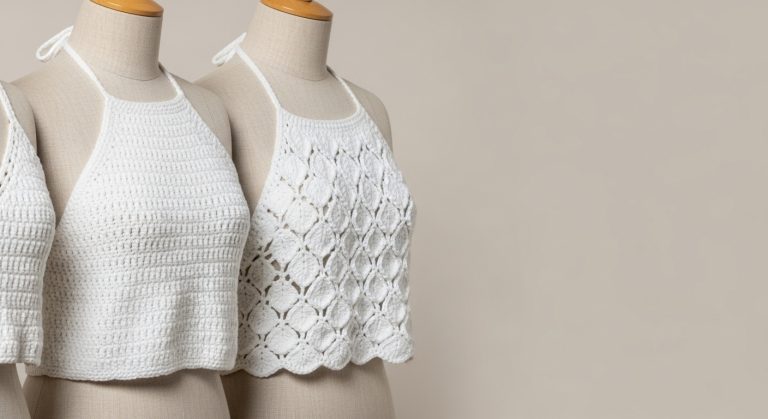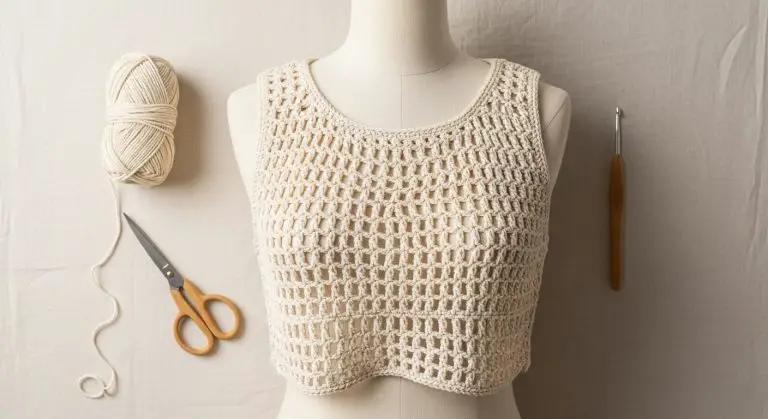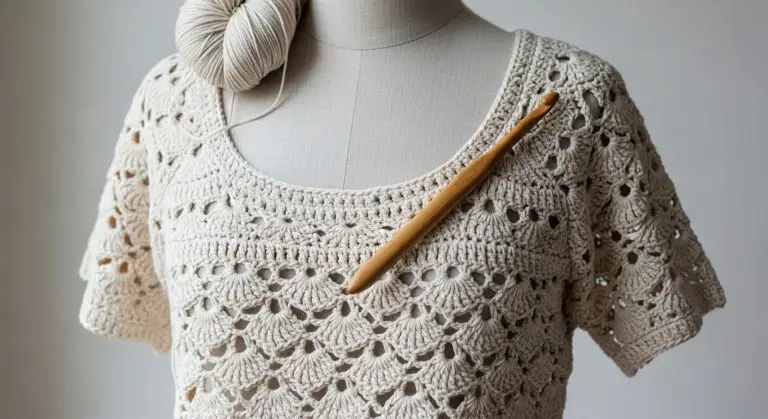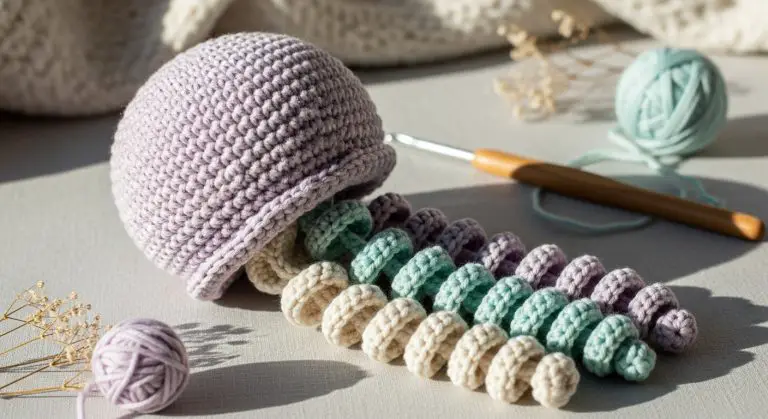How to Crochet for Beginners: Step-by-Step Easy Guide
Crochet is more than just a craft—it’s a relaxing, creative, and rewarding hobby that anyone can learn. If you’ve ever admired intricate scarves, cozy blankets, or cute amigurumi, this guide will help you take your first stitches with confidence.
Whether you’re completely new or just looking to refresh your basics, we’ll cover everything a beginner needs to know, from essential tools to step-by-step techniques, troubleshooting tips, and progression paths toward advanced projects.
Why Learn to Crochet?
Crochet isn’t just a fun way to make handmade items—it also has surprising benefits:
- Stress relief & mindfulness: Repetitive stitches can reduce anxiety and improve focus.
- Creative expression: Customize colors, patterns, and textures.
- Cost-effective gifts: Handmade scarves, hats, and blankets are meaningful presents.
- Sustainable crafting: Upcycle yarn scraps and create durable, eco-friendly items.
Pain points for beginners:
Many beginners feel overwhelmed by terminology, tension issues, or mistakes that ruin a project. This guide addresses these fears step by step and reassures you that mistakes are normal and part of learning.
Getting Started: Essential Crochet Tools
Before you start, gather the right materials. The right tools make learning easier and less frustrating.
| Tool | Purpose | Tips for Beginners |
|---|---|---|
| Crochet Hooks | Used to pull yarn through loops | Start with size H/8 (5 mm) – medium, comfortable for beginners |
| Yarn | Provides the material for your project | Use medium worsted weight yarn (4) – easy to handle and see stitches |
| Scissors | Cutting yarn | Keep sharp scissors nearby for clean cuts |
| Yarn Needle | Weaving ends | Blunt-tip needles are safer and beginner-friendly |
| Stitch Markers (optional) | Mark rounds or pattern points | Helps track progress in larger projects |
Extra tip: Soft, smooth yarn is easier for beginners to handle than textured or fuzzy yarn.
Understanding Basic Crochet Terms
Crochet has a unique language. Familiarity with common terms will make following patterns much easier:
- Chain (ch): The foundation stitch.
- Slip stitch (sl st): Joins pieces or rounds together.
- Single crochet (sc): Tight, dense stitch.
- Half double crochet (hdc): Medium height, versatile.
- Double crochet (dc): Taller, airy stitch.
- Yarn over (yo): Wrapping yarn over your hook to create stitches.
Pro tip: Use visual tutorials or stitch diagrams alongside written patterns—they help beginners understand stitch placement and tension.
Step-by-Step Beginner Crochet Stitches
1. Holding the Hook and Yarn
- Comfort is key: Hold the hook in your dominant hand like a pencil or knife.
- Tension control: Wrap yarn around your non-dominant hand fingers to maintain consistent tension.
- Practice movement: Try pulling yarn over the hook and through loops repeatedly to build muscle memory.
Beginner reassurance: It’s normal for your tension to be uneven at first. It will improve with practice.
2. Making a Foundation Chain
- Make a slip knot on your hook.
- Yarn over (yo) and pull through the loop.
- Repeat until your chain reaches the desired length.
Common mistakes:
- Chains too tight → difficult to work next row.
- Chains too loose → messy edges.
Tip: Aim for a chain that slides easily on the hook without sagging.
3. Single Crochet (sc)
- Insert hook into second chain from hook.
- Yarn over and pull through (2 loops on hook).
- Yarn over and pull through both loops.
Step-by-step progression:
- Practice 10–20 stitches until tension is consistent.
- Turn your chain and work back across for rows.
Troubleshooting:
- Skipped stitches → check starting point.
- Uneven edges → count stitches each row.
4. Half Double Crochet (hdc)
- Yarn over, insert hook into stitch.
- Yarn over, pull through (3 loops on hook).
- Yarn over, pull through all loops.
Uses: Makes garments, blankets, and hats with medium thickness.
5. Double Crochet (dc)
- Yarn over, insert hook into stitch.
- Yarn over, pull through (3 loops on hook).
- Yarn over, pull through 2 loops → 2 loops left.
- Yarn over, pull through last 2 loops.
Tip: Double crochet is great for airy, lacy designs.
6. Finishing Off
- Cut yarn, leaving 6 inches for weaving.
- Yarn over and pull through the last loop.
- Weave ends with a yarn needle for a neat finish.
Common Beginner Challenges & Solutions
| Challenge | Solution |
|---|---|
| Loose or tight stitches | Adjust tension by how you wrap your yarn on fingers |
| Skipped stitches | Count stitches per row, use stitch markers |
| Uneven edges | Practice turning chains and consistent placement |
| Frustration | Take breaks, crochet short sessions, focus on progress, not perfection |
Motivational note: Every mistake teaches you something. Even experienced crocheters redo rows.
Beginner-Friendly Crochet Projects
Starting simple builds confidence:
- Dishcloths / Washcloths: Perfect for practicing basic stitches.
- Scarves: Longer projects that reinforce consistent tension.
- Simple Hats: Introduces circular crochet and pattern reading.
- Granny Squares: Learn motifs and combining pieces for blankets.
- Amigurumi (small stuffed toys): Advanced beginners can practice shaping.
Progression Roadmap: Beginner → Advanced
| Level | Skills | Suggested Projects |
|---|---|---|
| Beginner | Chain, sc, hdc, dc, basic turning | Scarves, dishcloths |
| Intermediate | Increasing/decreasing, circular crochet | Hats, gloves, granny squares |
| Advanced | Complex patterns, lace, colorwork, shaping | Sweaters, blankets, amigurumi |
Tips to Stay Motivated
- Celebrate small wins (first neat row, first scarf, first square).
- Join online crochet communities for support and inspiration.
- Keep a small journal of projects and techniques learned.
- Experiment with colors and textures—creativity fuels engagement.
FAQs (Rich Snippets Friendly)
1. How long does it take to learn crochet as a beginner?
Most beginners can make simple projects like a scarf in a few hours. Regular practice improves speed and accuracy.
2. Do I need expensive yarn or hooks to start?
No. Medium-weight yarn and a comfortable hook are enough. Quality matters for final projects but beginners can start affordable.
3. Can left-handed people crochet?
Yes! Hooks work for both hands; follow mirrored tutorials.
4. How do I fix a mistake without unraveling the whole project?
Use stitch markers and carefully undo row by row until you reach the error.
5. What’s the easiest stitch for beginners?
Single crochet (sc) is ideal for practice and simple projects.
6. How do I keep my edges straight?
Count stitches each row and use turning chains consistently.
7. Can I crochet in circular patterns as a beginner?
Yes, start with small motifs like granny squares or round coasters.
8. How do I read crochet patterns?
Look for abbreviations (sc, dc, hdc), row instructions, and diagrams. Start with beginner-friendly patterns.
9. Is crochet better for stress relief than knitting?
Both are relaxing; crochet has the advantage of one hook, simpler tension management, and faster projects.
10. Can I sell my handmade crochet items?
Yes. Many crafters sell scarves, hats, and home decor online or locally.
Key Takeaways
- Begin with basic tools and yarn.
- Practice chains and simple stitches until confident.
- Mistakes are part of learning—embrace them.
- Start small with beginner-friendly projects.
- Gradually progress to intermediate and advanced techniques.
- Stay motivated through community, journaling, and creative experimentation.
Optional Quick Reference Table: Beginner Stitches
| Stitch | Height | Best For |
|---|---|---|
| sc | Short | Dishcloths, edges |
| hdc | Medium | Hats, scarves |
| dc | Tall | Lacy patterns, blankets |
| sl st | Very short | Joining, finishing |

Sarah Johnson have over 15 years of experience in residential design, she specializes in creating stylish, functional spaces that feel like home. Her work has been featured in Better Homes & Gardens and Architectural Digest, and through HouzGem, she shares practical tips and inspiration to help readers transform their living spaces with confidence and creativity.






